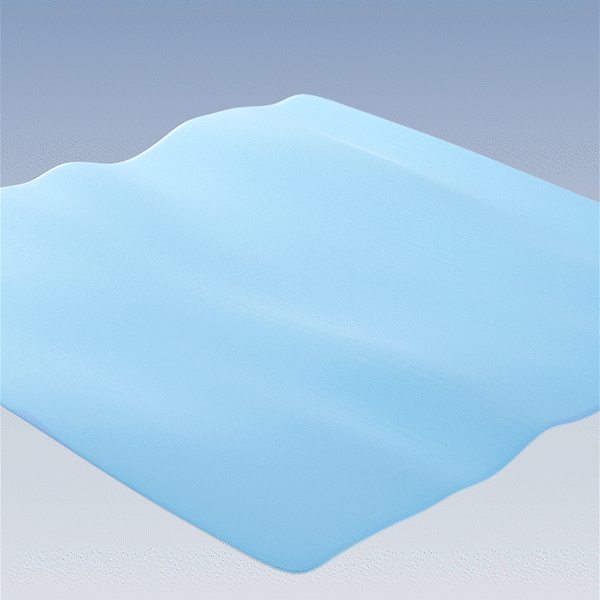Unveiling the Secrets of Q-max: The Key to a Perfect Night's Sleep
Q-max Rating for Fabric Measures Coolness and Affects Sleep
Often overlooked but significant nonetheless when selecting bedding materials, the Q-max value of fabrics is a key factor to ensuring a good night's sleep. In this blog, we will explain what Q-max is, examine the significance of Q-max for bedding materials and how it can elevate your sleep experience to new heights of cooling comfort and rest.
What is Q-max?
Q-max in its simplest terms, is a measure of how cool a material feels. The Q-max value refers to the maximum heat transfer coefficient, a number that indicates the ability of the material to conduct heat (transfer of heat from a hotter body to a colder body).
What is Q-max Value for Cooling Fabrics?
A higher Q-max value means the cooler the fabric feels, which also means better thermal conductivity and heat dissipation properties. In the context of bedding, Q-max translates to how effectively a material can regulate your body temperature while you sleep for a cooler, more comfortable sleeping environment.

How to Measure Q-max Value of Fabrics?
Labs use a machine where the fabric or textile material are placed on a cool, flat surface and a heated block is placed on top. The machine will measure how quickly the heat transfers from the warm block, through the fabric, and onto the cool surface. The transfer rate is then quantified as the Q-max value, where the higher the number, the cooler it feels and ability to pull heat away from the skin. For reference, silk has a Q-max value of 0.19 while Rest’s proprietary Evercool® measured 0.40, more than 2 times cooler for a luxuriously smooth and super cool-to-touch feeling.
Why High Q-max is Important for Bedding Materials?
Q-max Helps with Temperature Regulation
As we naturally drop our core body temperature in preparation for sleep, bedding with high Q-max value can facilitate this process to induce drowsiness. A higher Q-max fabric can also help regulate your body temperature more effectively, preventing you from overheating during the night. This is crucial for a restorative night's sleep, as being too hot can lead to restlessness and frequent waking. Rest’s proprietary fabric innovation, Evercool®, was designed to remain cool-to-touch and support your body’s temperature regulation.
Better Sleep Quality with High Q-max Bedding
Research suggests that an optimal thermal environment is one of the most important factors that can affect sleep and in doing so, improve the quality of your rest. Bedding with a high Q-max value can contribute to better sleep by maintaining a cool sleeping environment as excessive heat can disrupt the natural thermoregulation process our bodies undergo during sleep stages, potentially causing awakenings.
High Q-max Sheets Reduces Night Sweats
For sleepers who run hot like a human furnace (or sleep beside one), are likely to suffer from night sweats and know how disruptive it can be to a good night's sleep. Bedding materials with a high Q-max value can help dissipate heat more effectively, reducing the occurrence of night sweats and keeping you dry and comfortable.
Improved Energy Efficiency from Innovative Q-max Fabrics
When your bedding materials have a high Q-max, you might not need to rely as heavily on air conditioning or fans to maintain a comfortable sleeping temperature. This can save energy and reduce your utility bills. The best cooling comforters and cooling sheets can regulate your body temperature night after night with just a small initial cost that pays dividends in better sleep and a lower energy bill. Rest is committed to research and development of innovative materials and products such as the proprietary Evercool® fabric.

How to Choose Bedding with High Q-max?
Look for Specific Materials: Some bedding fabrics are known for their high Q-max values, such as silk, bamboo, Tencel™, and Rest’s very own Evercool®. Opting for sheets, pillowcases, and mattress covers made from these high Q-max materials can create a thermal environment that’s more conducive to sleep. In addition to feeling cool-to-touch, Evercool® also absorbs and disperses heat 10 times faster than cotton while being extremely moisture wicking to minimize night sweats.
Check Product Details: Many bedding manufacturers have started including Q-max on their website or product description. Keep an eye out for this information when shopping for new bedding and search for ones with a higher Q-max value. For reference, cotton is a common material many are familiar, which is rated at 0.11 and feels less cooling than silk, which is rated at 0.19, or even more impressively, Evercool®, which is 0.40.
Rest Reviews: Online reviews and listicles can be a great resource for finding high-quality bedding materials with excellent Q-max values. Look for testimonials from people who have experienced improved sleep quality and capability to regulate body temperature after using a particular product. This is why we’re proud to include all the Rest comforter reviews that many have praised the Evercool® Cooling Comforter as the best cooling comforter for hot sleepers.





